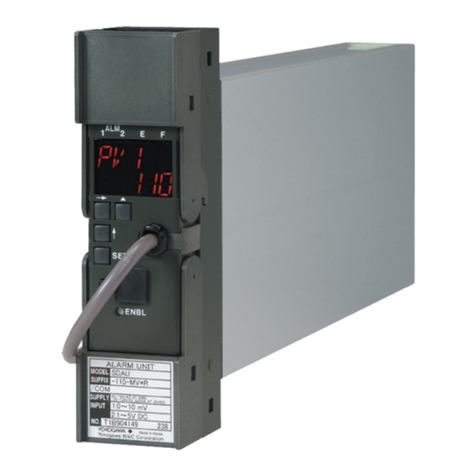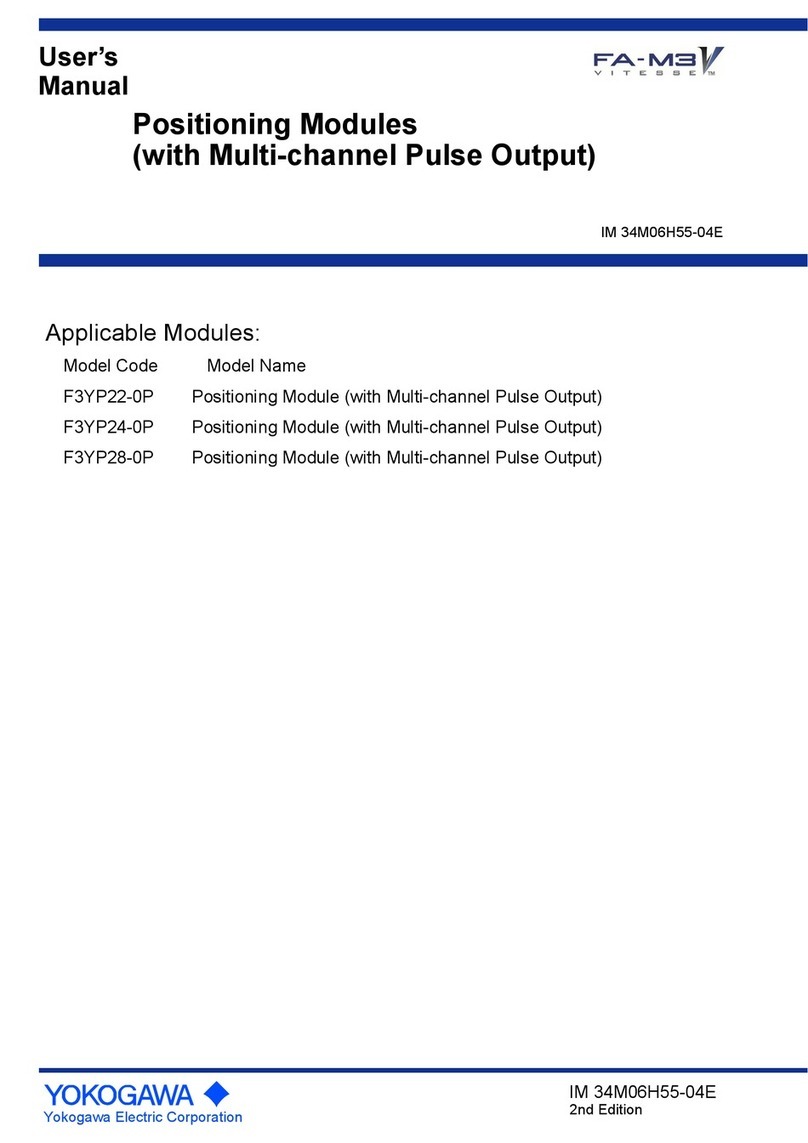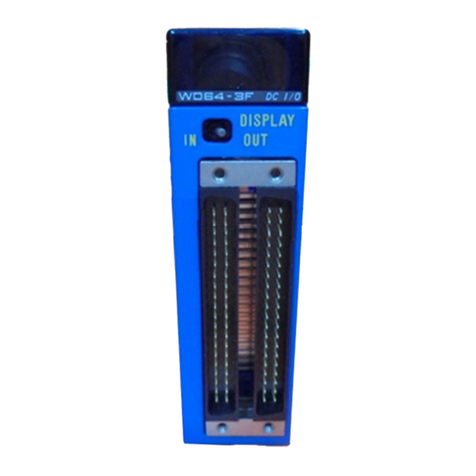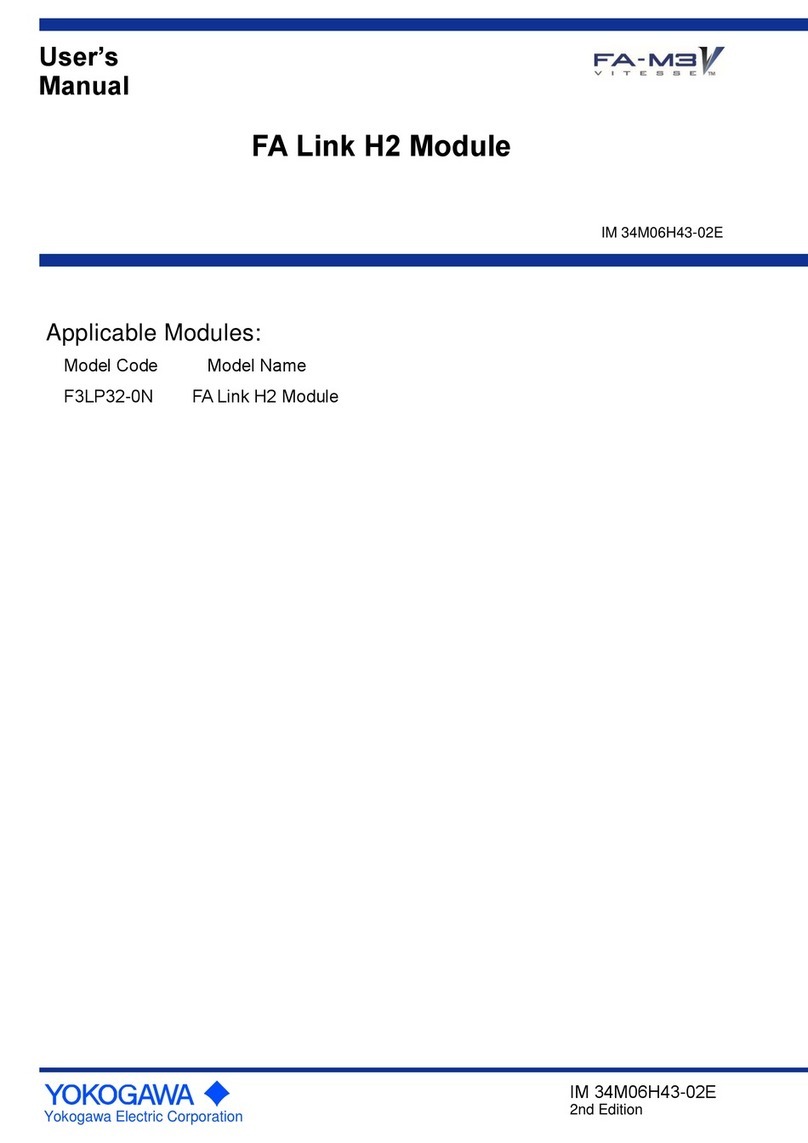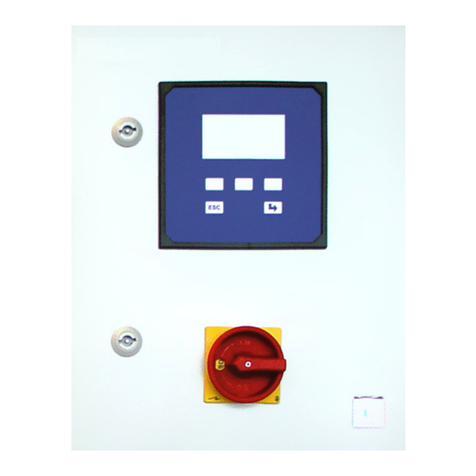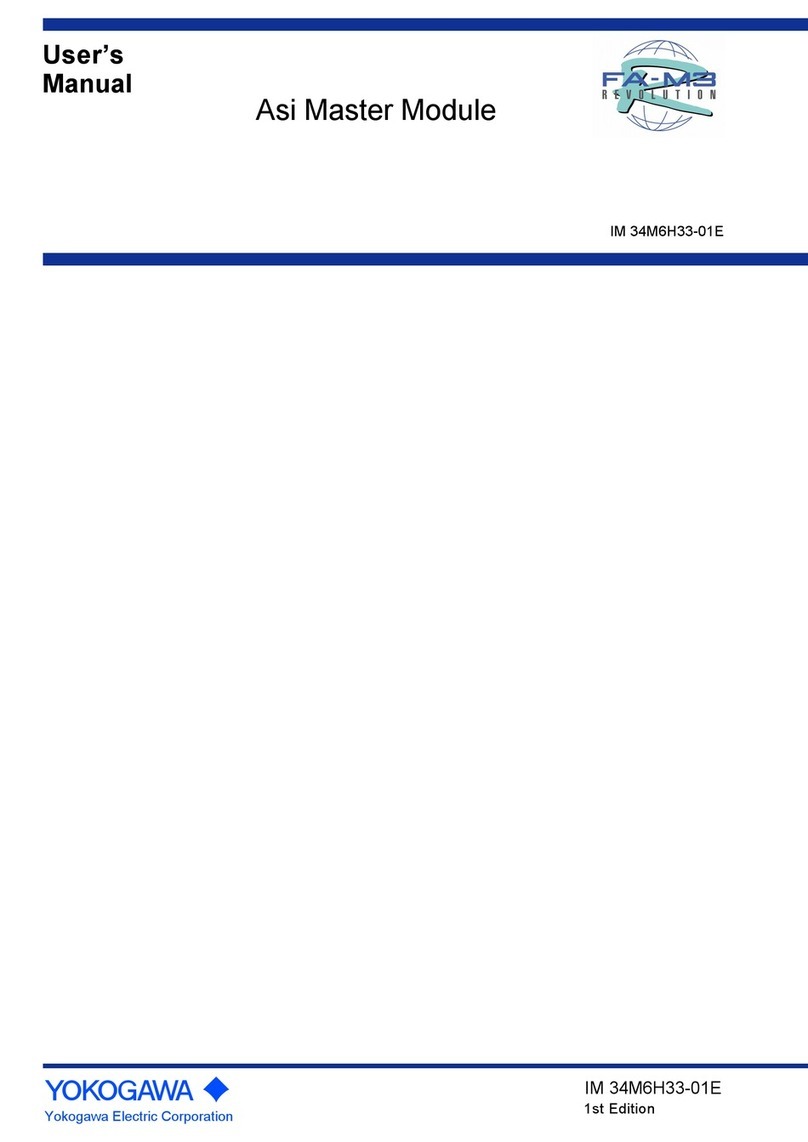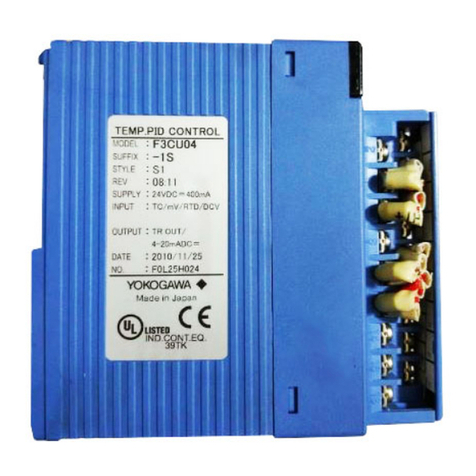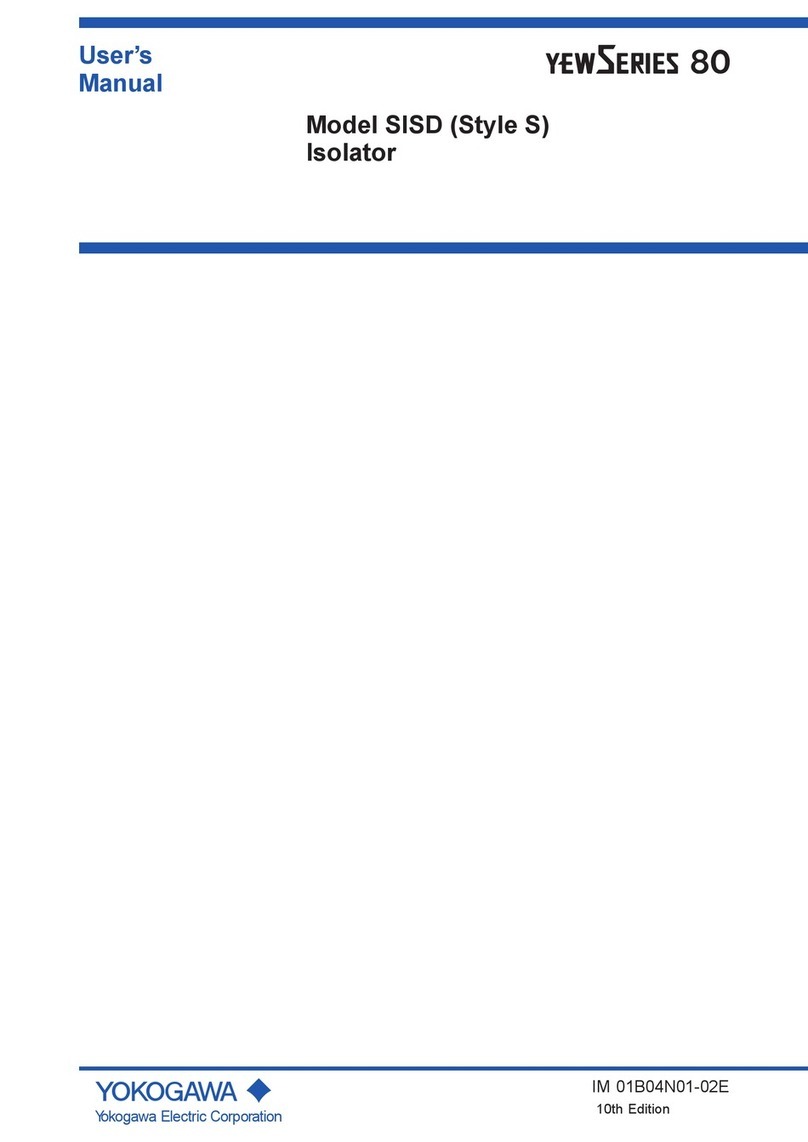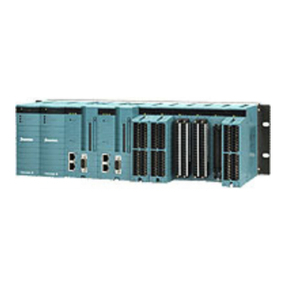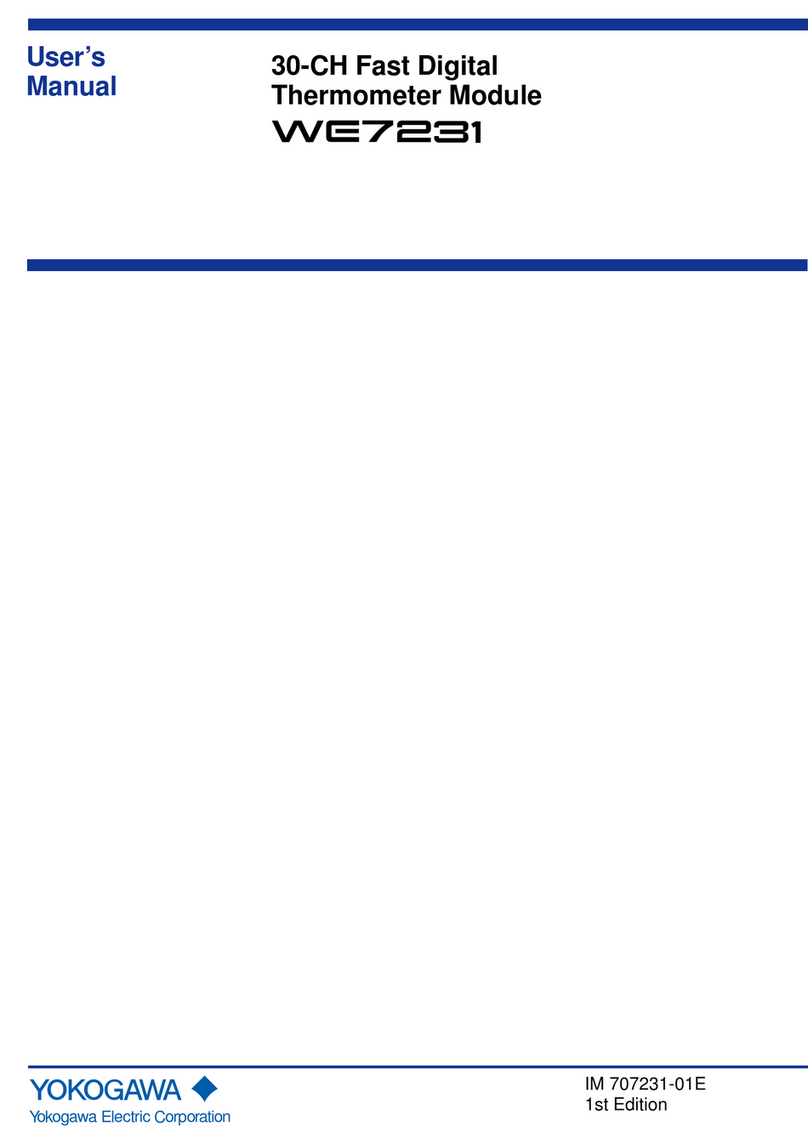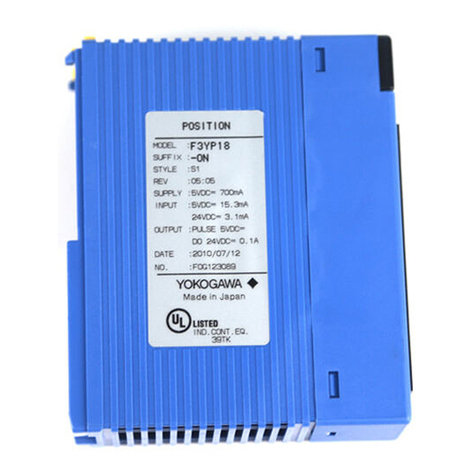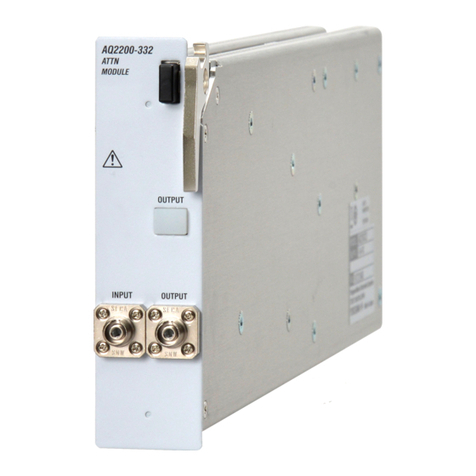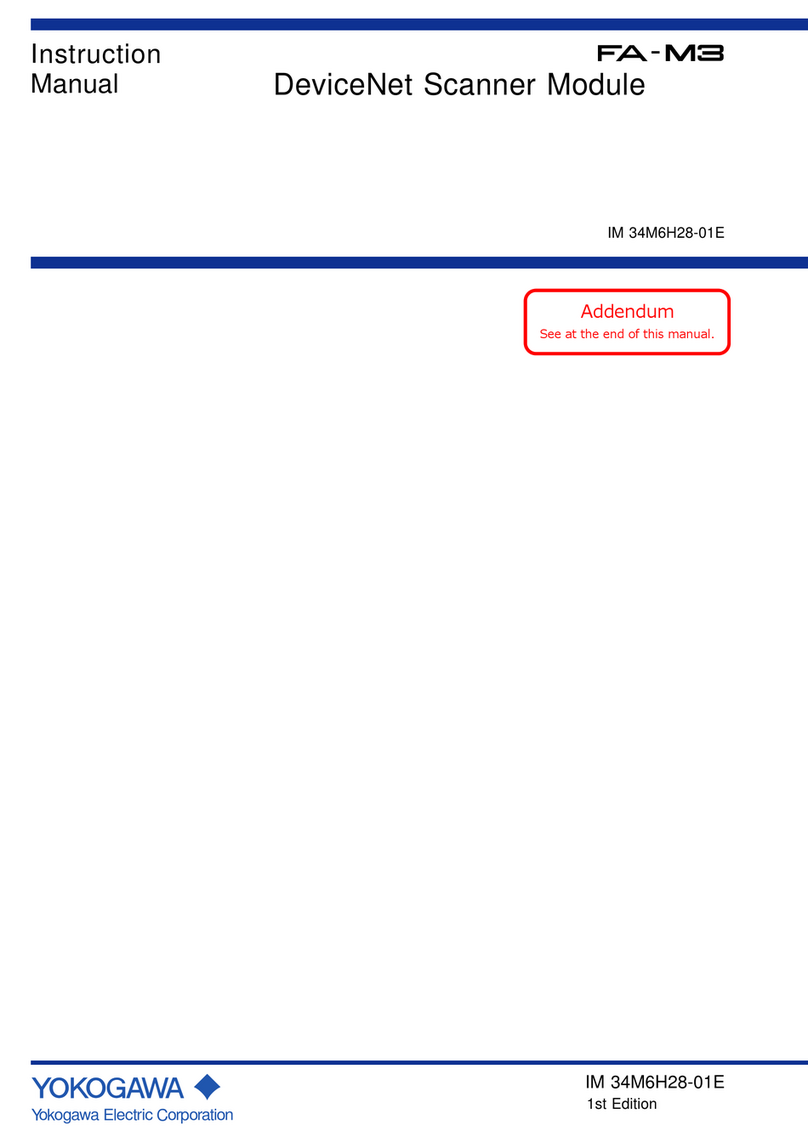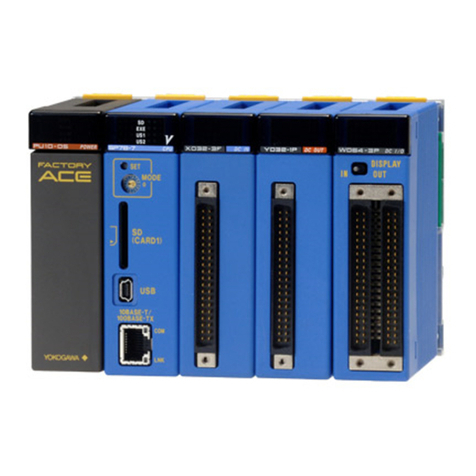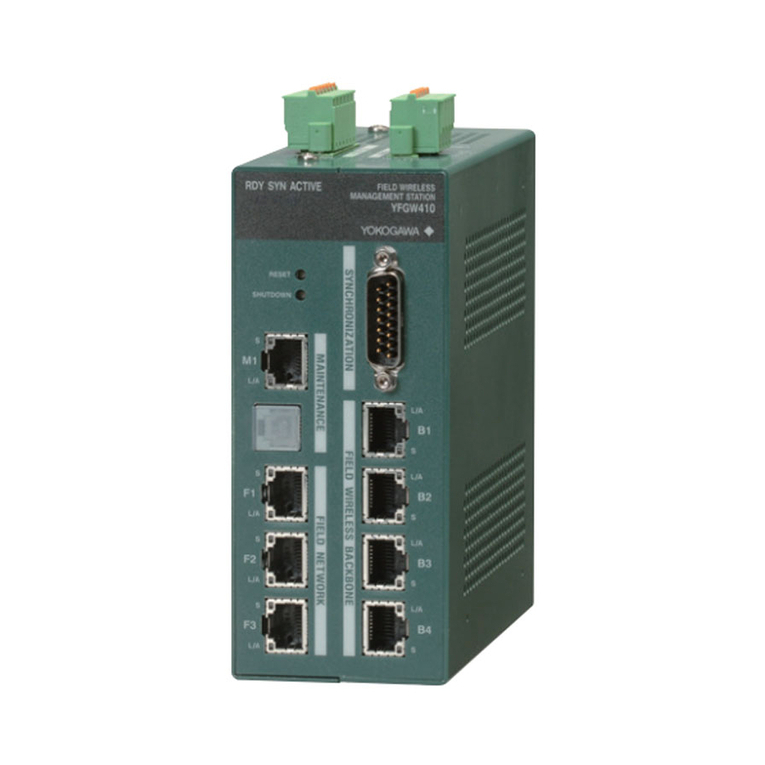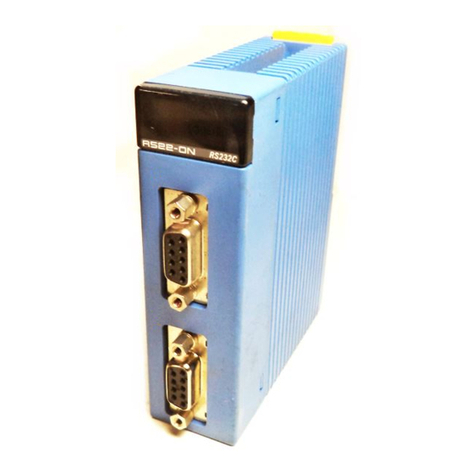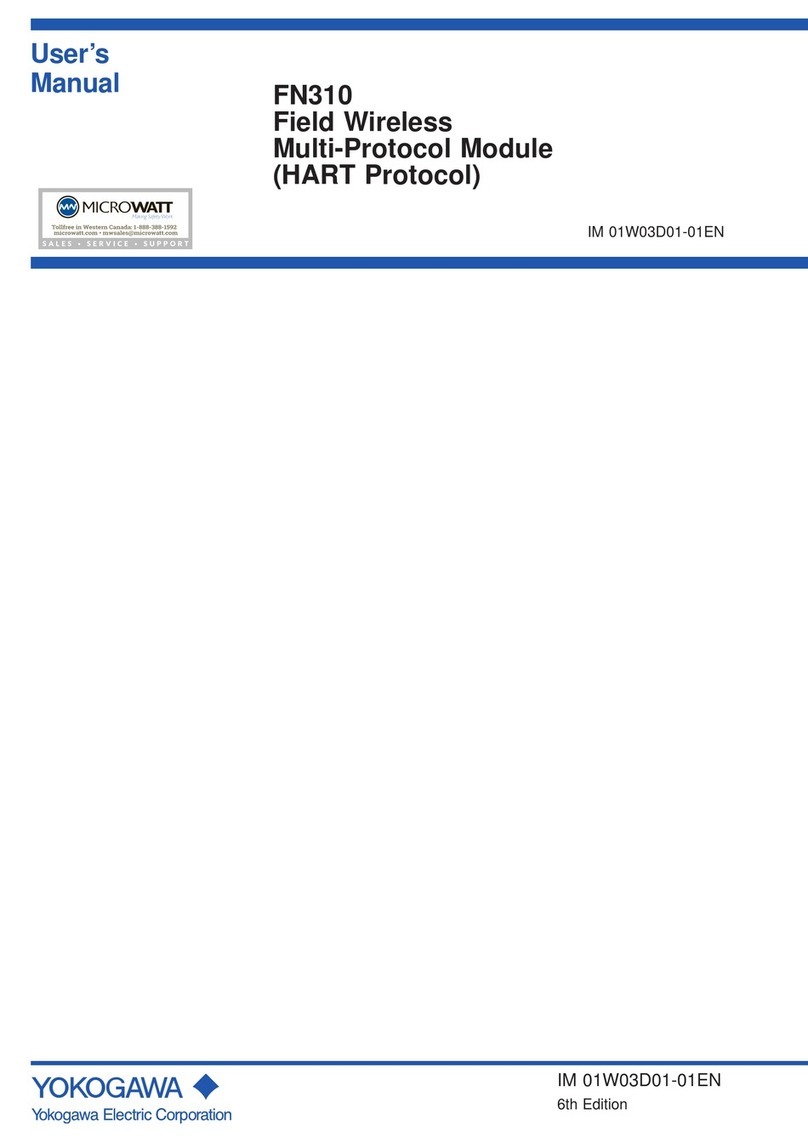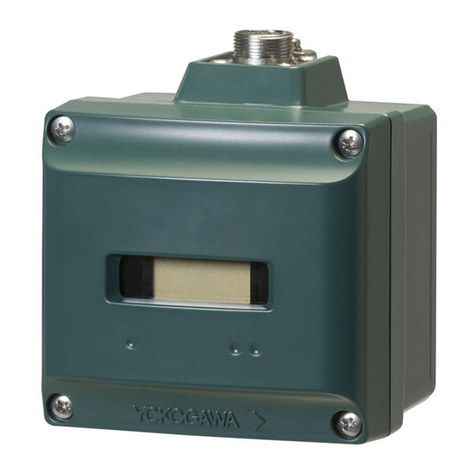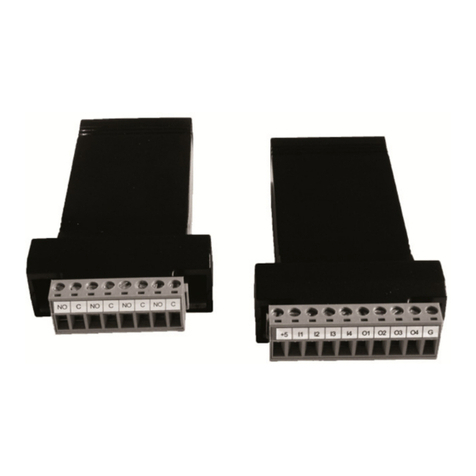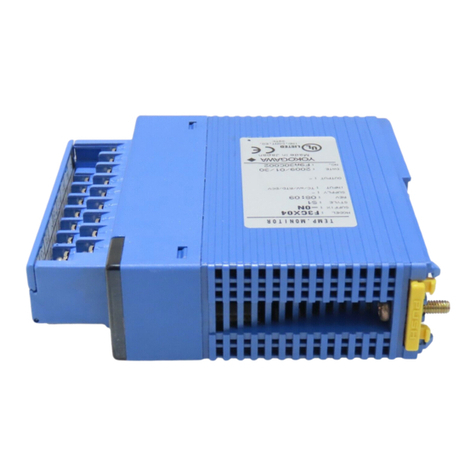
User’s
Manual
P.1/3IM 01W03B02-01EN
YOKOGAWA ELECTRIC CORPORATION
Headquarters
9-32, Nakacho, 2-chome, Musashino-shi, Tokyo, 180-8750 JAPAN
Phone : 81-422-52-5555
Branch Sales Offices
Osaka, Nagoya, Kurashiki, Hiroshima, Fukuoka, Kitakyusyu
YOKOGAWA CORPORATION OF AMERICA
Head Office
12530 West Airport Blvd, Sugar Land, Texas 77478, USA
Phone : 1-281-340-3800 Fax : 1-281-340-3838
Georgia Office
2 Dart Road, Newnan, Georgia 30265, USA
Phone : 1-800-888-6400 Fax : 1-770-254-0928
YOKOGAWA AMERICA DO SUL LTDA.
Alameda Xingu 850 Barueri CEP 06455-030- Barueri – SP/Brasil
Phone : 55-11-3513-1300 (Sales, Engineering and Service)
55-11-5681-2400 (Manufacturing and Procurement)
Fax : 55-11-5681-4434
YOKOGAWA EUROPE B. V.
Euroweg 2, 3825 HD Amersfoort, THE NETHERLANDS
Phone : 31-88-4641000 Fax : 31-88-4641111
YOKOGAWA ELECTRIC CIS LTD.
Grokholsky per 13 Building 2, 4th Floor 129090, Moscow, RUSSIA
Phone : 7-495-737-7868 Fax : 7-495-737-7869
YOKOGAWA CHINA CO., LTD.
3F Tower D Cartelo Crocodile Building, No.568 West Tianshan Road,
Shanghai 200335, CHINA
Phone : 86-21-62396262 Fax : 86-21-62387866
YOKOGAWA ELECTRIC KOREA CO., LTD.
(Yokogawa B/D, Yangpyeong-dong 4-Ga), 21, Seonyu-ro 45-gil, Yeongdeungpo-gu,
Seoul, 07209, KOREA
Phone : 82-2-2628-6000 Fax : 82-2-2628-6400
YOKOGAWA ENGINEERING ASIA PTE. LTD.
5 Bedok South Road, Singapore 469270, SINGAPORE
Phone : 65-6241-9933 Fax : 65-6241-9919
YOKOGAWA INDIA LTD.
Plot No.96, Electronic City Complex, Hosur Road, Bangalore - 560 100, INDIA
Phone : 91-80-4158-6000 Fax : 91-80-2852-0625
YOKOGAWA AUSTRALIA PTY. LTD.
Tower A, 112-118 Talavera Road, Macquarie Park NSW 2113, AUSTRALIA
Phone : 61-2-8870-1100 Fax : 61-2-8870-1111
YOKOGAWA MIDDLE EAST & AFRICA B.S.C.(C)
P.O. Box 10070, Manama, Building 577, Road 2516, Busaiteen 225, Muharraq,
BAHRAIN
Phone : 973-17-358100 Fax : 973-17-336100
Jan. '20
1st Edition: Dec. 2021 (YK)
All Rights Reserved, Copyright © 2021, Yokogawa Electric Corporation
IM 01W03B02-01EN
1st Edition
FN120
Field Wireless
Communication Module
IM 01W03B02-01EN
1. Introduction
This manual describes how to use the FN120 Field Wireless Communication Module
(hereafter simply referred to as FN120). FN120 enables various sensors with digital
communication interface to be operated in eld wireless network by converting input/
output of sensor to wireless transmission based on the wireless communication standard
ISA100.11a.
Your FN120 was precisely calibrated at the factory before shipment. To ensure both
safety and eciency, please read this manual carefully before you operate the FN120.
Table 1.1 lists the documents related to this manual.
Table 1.1 Related Documents
Document Name Document No.
General Specication
Field Wireless System Overview GS 01W01A01-01EN
General Specications
FN120 Field Wireless Communication Module GS 01W03B02-01EN
nRegarding This Manual
• This manual should be provided to the end user.
• This manual and the device information attached on packing box are essential parts
of the product; keep them in a safe place for future reference.
• The contents of this manual are subject to change without prior notice.
• All rights reserved. No part of this manual may be reproduced in any form without
Yokogawa’s written permission.
• Yokogawa makes no warranty of any kind with regard to this manual, including, but
not limited to, implied warranty of merchantability and tness for a particular purpose.
• If any question arises or errors are found, or if any information is missing from this
manual, please inform the nearest Yokogawa sales oce.
• The specications covered by this manual are limited to those for the standard type
under the specied model number break-down and do not cover custom-made
instruments. When products whose sux code or optional codes contain code “Z”
and an exclusive document is attached, please read it along with this manual.
• Please note that changes in the specications, construction, or component parts of
the instrument may not immediately be reected in this manual at the time of change,
provided that postponement of revisions will not cause diculty to the user from a
functional or performance standpoint.
n Safety, Protection, and Modication of this Product
• This product is designed to be used by a person with specialized knowledge.
• In order to protect the operator, product, and system controlled by the product,
observe the safety precautions described in this manual. If users handle contrary to
these instructions, we cannot guarantee the safety.
• Modication of the product is strictly prohibited.
• The following safety symbols are used in this manual:
WARNING
Indicates a potentially hazardous situation which, if not avoided, could result in death
or serious injury.
CAUTION
Indicates a potentially hazardous situation which, if not avoided, may result in minor
or moderate injury or physical damage. It may also be used to alert against unsafe
practices.
IMPORTANT
Indicates that operating the hardware or software in this manner may damage it or
lead to system failure.
NOTE
Draws attention to information essential for understanding the operation and features.
: Functional grounding terminal
1.1 Safe Use of This Product
For the safety of the operator and to protect the instrument and the system, please be
sure to follow this manual’s safety instructions when handling this instrument. If these
instructions are not heeded, the protection provided by this instrument may be impaired.
In this case, Yokogawa cannot guarantee that the instrument can be safely operated.
Please pay special attention to the following points:
a) Installation
• The instrument must be installed by expert engineer or skilled personnel. The
procedures described about INSTALLATION are not permitted for operators.
• In case of high process temperature, care should be taken not to burn yourself
because the surface of body and case reaches a high temperature.
• All installation shall comply with local installation requirement and local electrical
code.
• When handling with the instrument, avoid intense vibration and shock. In particular,
care should be taken not to drop the instrument because it may result in damage.
b) Wiring
• The instrument must be installed by an engineer or technician who has an expert
knowledge of this instrument. Operators are not permitted to carry out wiring unless
they meet this condition.
c) Operation
• Do not remove the combination device or metal waterproof cap (with optional code
/CP) in wet weather or humid environment. If not connected, stated enclosure
protection is not applicable.
d) Maintenance
• Please do not carry out except being written to maintenance descriptions. When
these procedures are needed, please contact nearest YOKOGAWA oce.
• Care should be taken to prevent the buildup of drift, dust or other material on the
name plate. In case of its maintenance, soft and dry cloth is used.
e) Modication
• Yokogawa will not be liable for malfunctions or damage resulting from any
modication made to this instrument by the customer.
1.2 Radio Wave
IMPORTANT
• This product is equipped with a wireless module which is designated as a
certication of construction type as a wireless facility for 2.4 GHz band low-power
data communication system of the Radio Act.
Refer to “5.2 Regulatory Compliance Statements” for detail. Due to the
designated certication of construction type, users may be subject to legal
punishment in case of disassembling or modifying this product.
• RF Transmitter power
The RF transmitter power is xed at 12 dBm eirp. max (including 2 dBi antenna
gain). All user cannot change the RF transmitter power.
• Microwave ovens and other industrial, scientic and medical equipment,
as well as local wireless stations (license required) and specic low-power
wireless stations (license not required) for identifying mobile objects used in the
production line of a factory, use the same frequency band as this product. Prevent
interference with other wireless stations.
• Check that local wireless stations and specic low-power wireless stations are not
being used in the vicinity before using this product.
• If this product causes radio interference in a local wireless station used for
identifying mobile objects, change the working frequency or stop the emission of
radio waves immediately. For details on how to prevent radio interference, contact
our service oce.
• Although this product has been designed to resist high frequency electrical noise,
if a radio transceiver is used near this product or its external wiring, this product
may be aected by high frequency noise pickup. To test this, start out from a
distance of several meters and slowly approach this product with the transceiver
while observing the measurement loop for noise eects. Thereafter use the
transceiver outside the range where the noise eects were rst observed.
1.3 Warranty
• The warranty shall cover the period noted on the quotation presented to the
purchaser at the time of purchase. Problems occurring during the warranty period
shall basically be repaired free of change.
• If any problems are experienced with this product, the customer should contact the
Yokogawa representative from which this product was purchased or the nearest
Yokogawa oce.
• If a problem arises with this product, please inform us of the nature of the problem
and the circumstances under which it developed, including the model specication
and serial number. Any diagrams, data and other information you can include in your
communication will also be helpful.
• The party responsible for the cost of xing the problem shall be determined by
Yokogawa following an investigation conducted by Yokogawa.
nThe purchaser shall bear the responsibility for repair costs,
even during the warranty period, if the malfunction is due to:
• Improper and/or inadequate maintenance by the purchaser.
• Malfunction or damage due to a failure to handle, use, or store this product in
accordance with the design specications.
• Use of this product in question in a location not conforming to the standards specied
by Yokogawa, or due to improper maintenance of the installation location.
• Failure or damage due to modication or repair by any party except Yokogawa or an
approved representative of Yokogawa.
• Malfunction or damage from improper relocation of this product in question after
delivery.
• Reason of force majeure such as res, earthquakes, storms/oods, thunder/
lightening, or other natural disasters, or disturbances, riots, warfare, or radioactive
contamination.
1.4 Trademark and Notice
nTrademarks
In this document, trademarks or registered trademarks are not marked with “™” or “®”.
Product names and company names in this document are trademarks or registered
trademarks of the respective companies.
nNotice
NO RIGHTS OR LICENSES, EXPRESS OR IMPLIED, ARE GRANTED TO USE
THIRDPARTY DEVICES IN COMBINATION WITH THESE PRODUCTS IN A
WIRELESS MESH NETWORK, OR TO USE THIRD-PARTY SERVICES TO ACCESS,
MONITOR OR CONTROL THESE PRODUCTS IN A WIRELESS MESH NEWORK VIA
THE INTERNET OR ANOTHER EXTERNAL WIDE AREA NETWORK.
nPatent Marking
Covered by one or more claims of patents:
“http://sipcollc.com/patent-list/” and “http://intusiq.com/patent-list/”.
